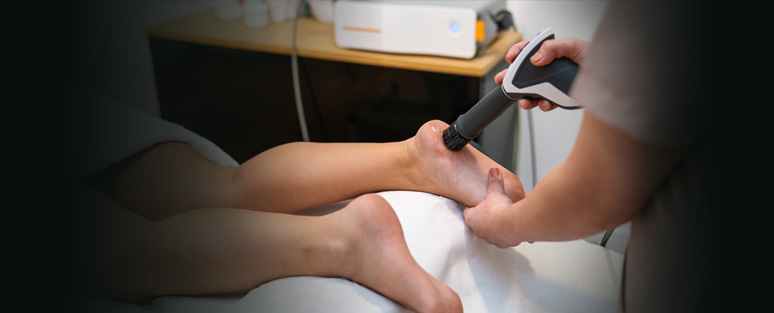
Joint pain is a debilitating issue that impacts millions of people, disrupting their daily lives and overall well-being. In the list of treatment options, Platelet-Rich Plasma (PRP) therapy has emerged as a potential solution, gaining provider and patient attention. PRP therapy taps into the body's natural healing abilities to address joint pain and injuries. But does it live up to the hype? In this blog post, we will delve into the science behind PRP therapy for joint pain, evaluate its effectiveness based on credible research, and provide insights from reliable sources to help you make an informed decision about this promising treatment.
Understanding Platelet-Rich Plasma (PRP)
Platelet-rich plasma, often called PRP, is a medical procedure that utilizes the body's natural healing abilities to combat joint pain, injuries, and various medical conditions. The process begins with a blood draw from the patient, followed by isolating a concentrated portion of platelets and growth factors from the collected blood using a centrifuge. The PRP solution is then administered to the afflicted joint.
The primary goal of PRP therapy is to trigger tissue repair and regeneration by leveraging the body's natural capacity for healing. Platelets, recognized for their role in clotting and wound healing, also contain essential growth factors that facilitate tissue repair and cellular regeneration. By introducing a high concentration of platelets and growth factors into the affected area, PRP therapy aims to expedite the healing process, reduce inflammation, and alleviate pain.
Does PRP Therapy Work for Joint Pain?
While PRP is used to help treat chronic tendinopathy and sports injuries, promising research findings suggest that PRP therapy may also be a viable option for managing joint pain, particularly in the case of mild to moderate osteoarthritis. In a meta-analysis conducted by Tang et al. in 2020, the efficacy of PRP therapy was compared to hyaluronic acid (HA) treatments for knee osteoarthritis. The results showed some compelling advantages of PRP over HA treatments. PRP demonstrated superior short-term improvement in joint function and provided more long-term pain relief, along with enhanced joint functionality. Importantly, PRP did not appear to increase the risk of side effects compared to HA treatments. Additional studies, such as that by Belk et al in 2021, also assessed the effect of PRP vs. HA treatments and demonstrated improved clinical outcomes when compared with HA. But they took it a step further, noting how the quality of the PRP matters, specifically leukocyte rich versus leukocyte poor, stimulating even further research.
While these findings are encouraging, it is important to note that further research is needed to determine the optimal ways to utilize PRP and HA for the best results. Additionally, individual responses to PRP therapy can vary based on several factors, such as the specific joint condition and the patient's overall health.
The Potential Benefits of PRP Therapy for Joint Pain
PRP therapy offers several potential benefits for individuals grappling with joint pain:
- Non-Surgical Approach: PRP therapy provides a non-surgical treatment option, making it an appealing choice for individuals seeking alternatives to surgery or those who may not be suitable candidates for surgical interventions.
- Minimal Side Effects: PRP therapy utilizes a patient's blood components, the risk of adverse reactions or allergic responses is minimal compared to treatments that involve foreign substances.
- Enhanced Joint Function: Many patients with mild to moderate osteoarthritis report improved joint function and reduced pain following PRP therapy, allowing them to resume their daily activities more comfortably and enjoy a better quality of life.
- Longer-lasting Results: Some studies suggest that the benefits of PRP therapy can endure for an extended period beyond cortisone, reducing the need for frequent treatments and offering sustained relief
- Regenerative Potential: PRP therapy is thought to promote tissue regeneration, which can be particularly beneficial for individuals with chronic joint conditions like mild to moderate osteoarthritis.
The Importance of Consultation and Individualized Treatment
While the potential benefits of PRP therapy are promising, it's crucial to approach this treatment option with realistic expectations. Not every patient will experience the same level of relief, and outcomes can vary based on individual factors such as the severity of the joint condition, overall health, and age.
Before considering PRP therapy for joint pain, it is critical to consult with a qualified healthcare provider. Orthopedic Surgeons are the experts in Orthopedic care, both operative and non-operative, and are the regenerative medicine experts well-equipped to assess the totality of your specific condition, discuss treatment options, and determine whether PRP therapy aligns with your needs and expectations.
An individualized approach to treatment is paramount. Your Orthopedic Provider can tailor the PRP therapy to your unique circumstances, ensuring the best possible outcomes. They will also guide what to expect during and after the procedure, including potential recovery times.
Conclusion
In the ongoing pursuit of effective joint pain solutions, Platelet-Rich Plasma (PRP) therapy emerges as a promising contender. The scientific evidence and expert opinions presented in this blog post suggest that PRP therapy can relieve and improve joint function for many patients. However, it's vital to acknowledge that individual outcomes may vary.
Before considering PRP therapy, consult with your Board Certified Orthopedic Surgeon, who can not only assess your condition, provide personalized recommendations, and help you make an informed decision regarding the most suitable treatment for your joint pain, but also understand the science and optimize the potential efficacy of your PRP injection. While PRP therapy may not be a panacea, it represents a significant stride in regenerative medicine and offers hope to those seeking respite from the burdens of joint pain.
In conclusion, PRP therapy is a cutting-edge approach that harnesses the body's natural healing abilities to address joint pain and improve joint function. While it shows promise, it is important to approach it with realistic expectations and seek guidance from your Board Certified Orthopedic Surgeon. Joint pain is a challenging condition, and PRP therapy represents an exciting avenue in the quest for effective treatments as osteoarthritis starts to limit function. With further research and advancements, it is on track to continue to evolve as a valuable tool in managing joint pain and enhancing the quality of life for many individuals.
Click Here to schedule a consultation with Dr. Natalie Mesnier at Multnomah Orthopedic Clinic. Your orthopedic health is her priority.














